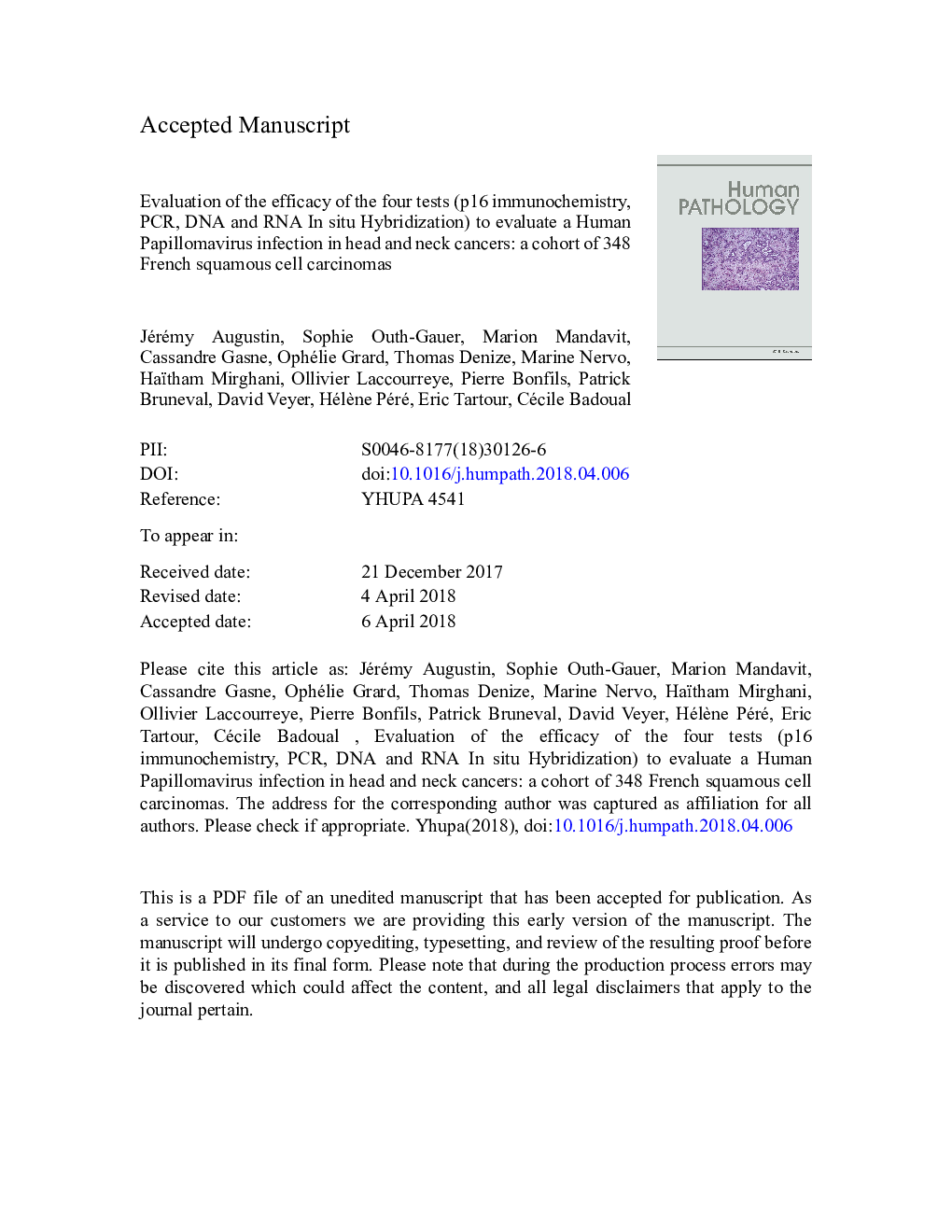| Article ID | Journal | Published Year | Pages | File Type |
|---|---|---|---|---|
| 8807470 | Human Pathology | 2018 | 27 Pages |
Abstract
It is now established that human papillomavirus (HPV) plays a role in the development of a subset of head and neck squamous cell carcinomas (SCCs), notably oropharyngeal (OP) SCCs. However, it is not clear which test one should use to detect HPV in OP and non-OP SCCs. In this study, using 348 head and neck SCCs (126 OP SCCs and 222 non-OP SCCs), we evaluated diagnostic performances of different HPV tests in OP and non-OP SCCs: polymerase chain reaction, p16 immunostaining, in situ hybridization targeting DNA (DNA-CISH) and RNA (RNA-CISH), combined p16 + DNA-CISH, and combined p16 + RNA-CISH. HPV DNA (polymerase chain reaction) was detected in 26% of all tumors (44% of OP SCCs and 17% of non-OP SCCs). For OP SCCs, RNA-CISH was the most sensitive stand-alone test (88%), but p16 + RNA-CISH was even more sensitive (95%). Specificities were the same for RNA-CISH and DNA-CISH (97%), but it was better for p16 + RNA-CISH (100%). For non-OP SCCs, all tests had sensitivities less than 50%, and RNA-CISH, DNA-CISH, and p16 + DNA-CISH had 100%, 97%, and 99% specificities, respectively. As a stand-alone test, RNA-CISH is the most performant assay to detect HPV in OP SCCs, and combined p16 + RNA-CISH test slightly improves its performances. However, RNA-CISH has the advantage of being one single test. Like p16 and DNA-CISH, RNA-CISH performances are poor in non-OP SCCs to detect HPV, and combining tests does not improve performances.
Related Topics
Health Sciences
Medicine and Dentistry
Pathology and Medical Technology
Authors
Jérémy MD, Sophie MSc, Marion PA-C, Cassandre MSc, Ophélie PA-C, Thomas MSc, Marine MSc, Haïtham MD, Ollivier MD, PhD, Pierre MD, PhD, Patrick MD, PhD, David PharmD, PhD, Hélène MD, PhD, Eric MD, PhD, Cécile MD, PhD,
